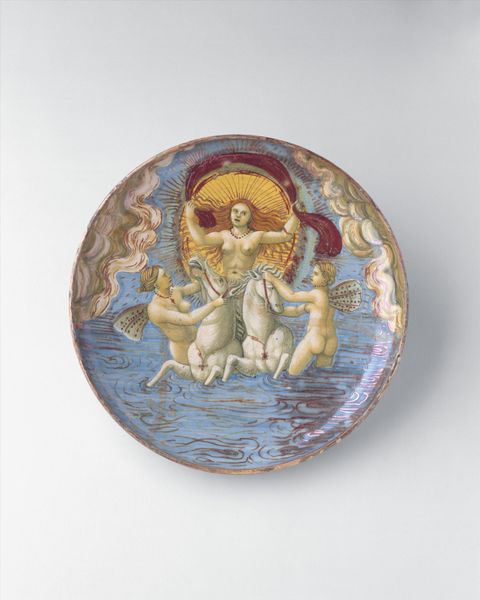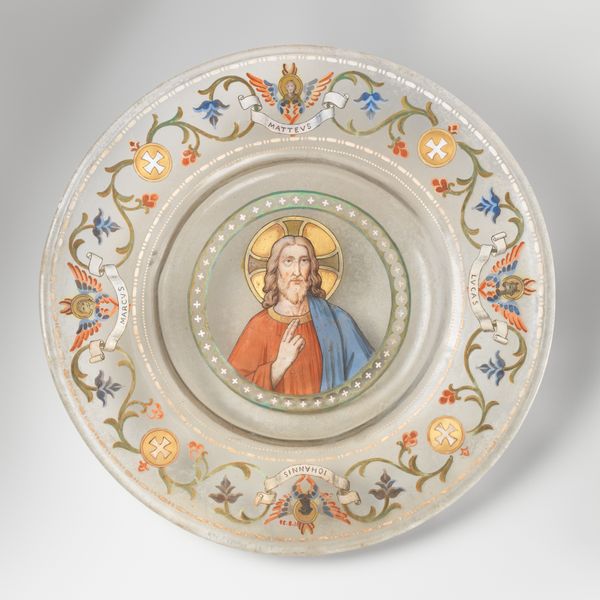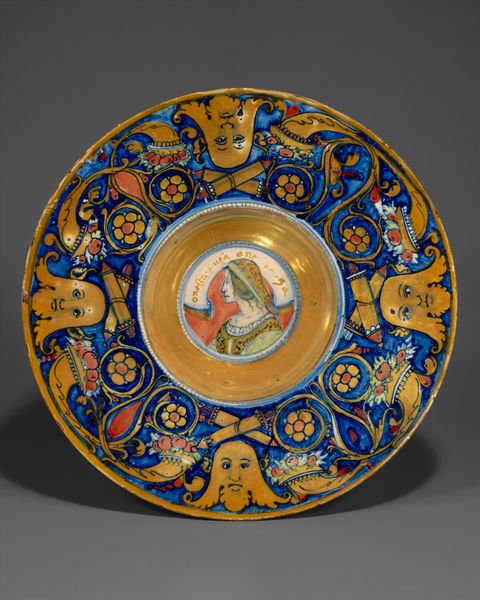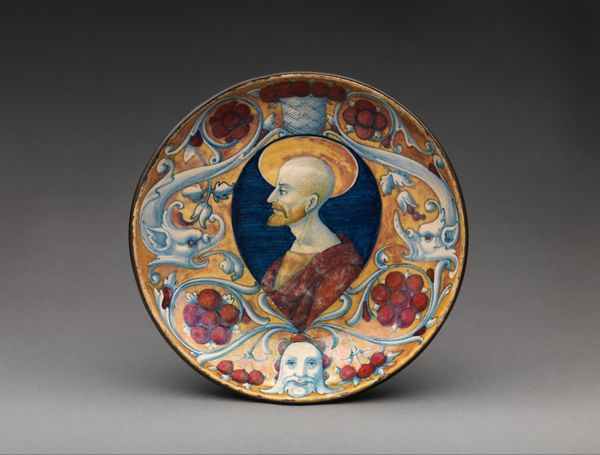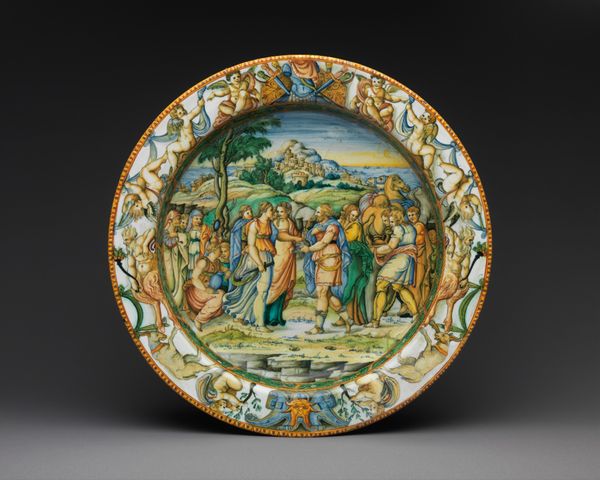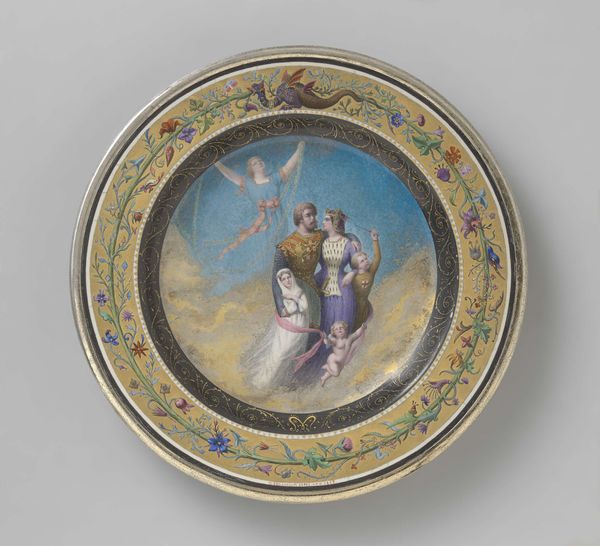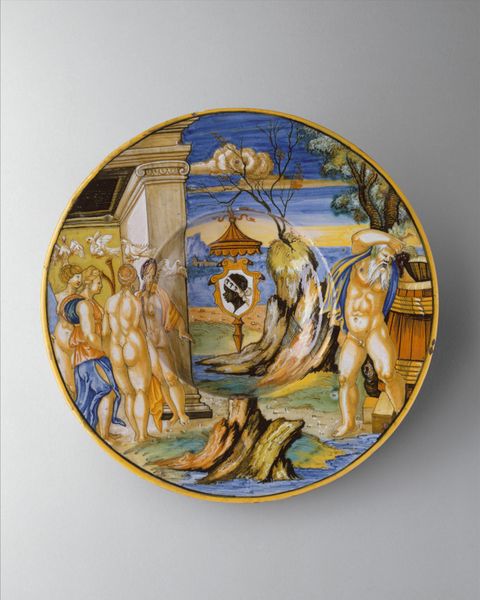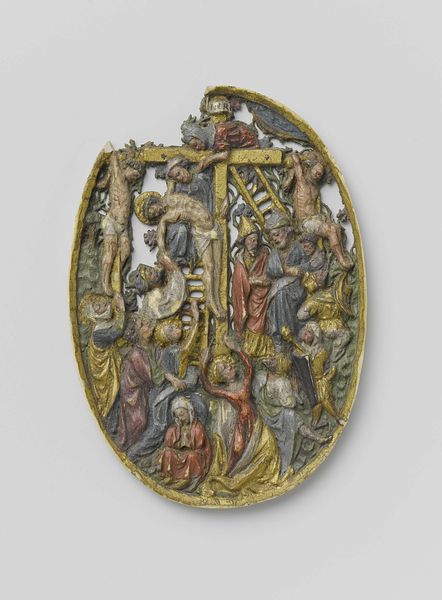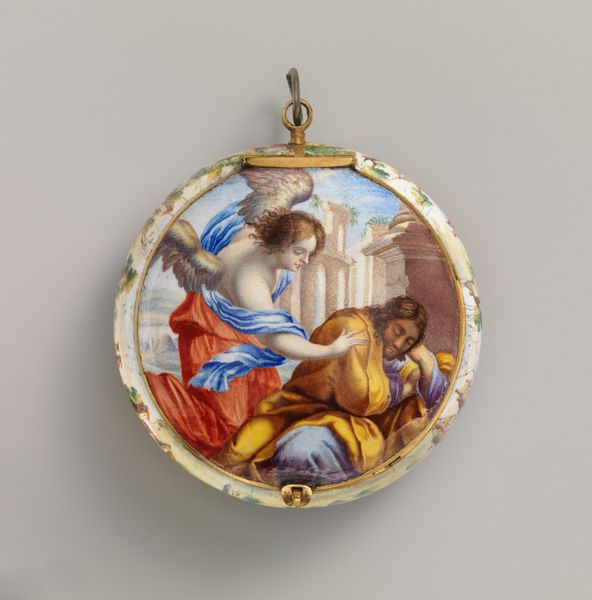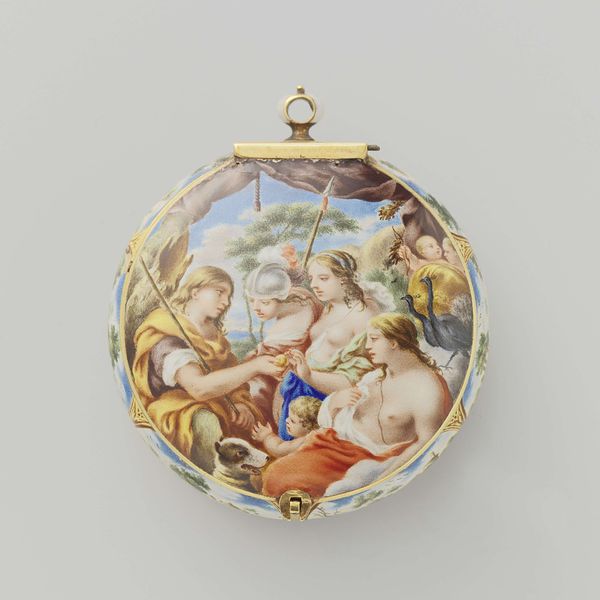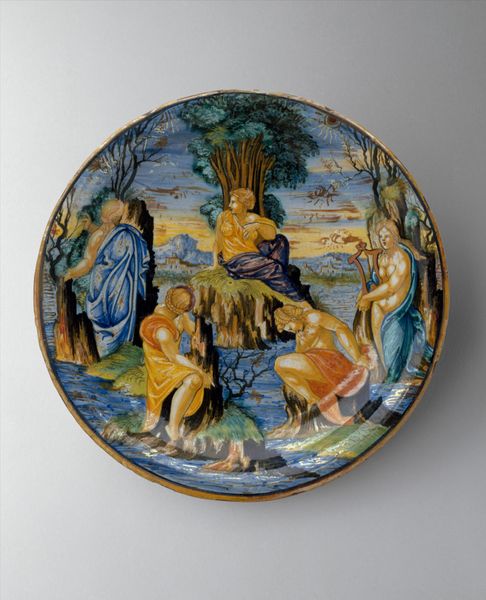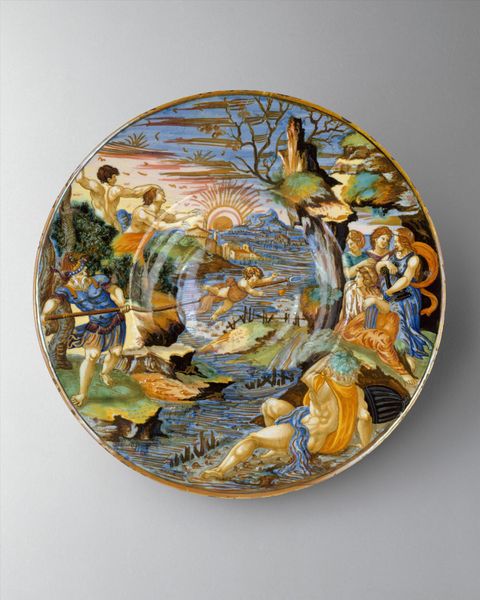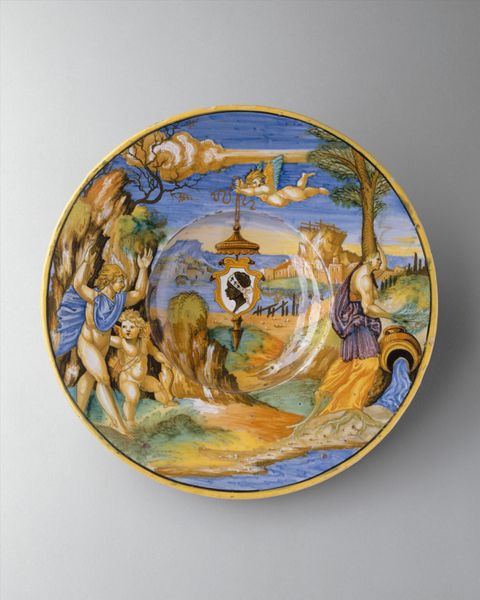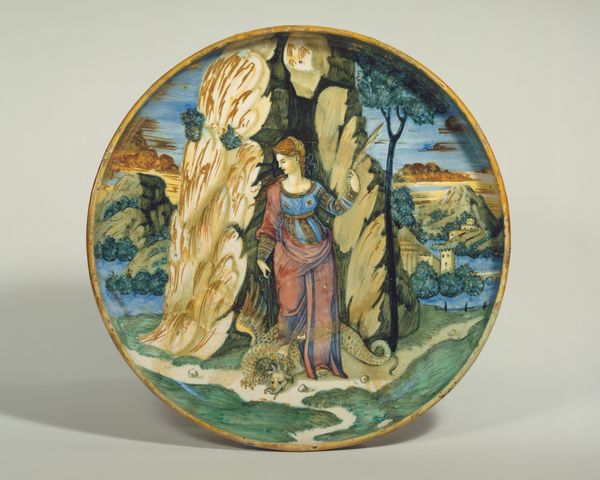
tempera, ceramic, earthenware
#
portrait
#
tempera
#
pottery
#
ceramic
#
figuration
#
madonna
#
earthenware
#
child
#
stoneware
#
ceramic
#
earthenware
#
italian-renaissance
#
miniature
Dimensions: Diam. 8 1/8 in. (20.7 cm)
Copyright: Public Domain
Editor: Here we have a glazed earthenware dish from 1530, painted by Maestro Giorgio Andreoli. It’s a “coppa,” or dish, depicting the Madonna and Child, and the execution of the figures feels very personal and intimate despite its medium, and small scale. What are your thoughts on the cultural significance of an object like this? Curator: It’s interesting to consider its function. Serving dishes in the Renaissance were often vehicles for displaying wealth and refinement. This piece is less about domestic use, and more about social signaling. Imagine displaying a religious scene rendered with such care! How would its presence influence conversations and dinner-party dynamics, do you think? Editor: That’s a great point! It feels almost devotional. To use such a delicate image feels…transgressive, almost? Curator: Precisely. But this tension between the sacred and the secular is key. Consider the patrons. Were they explicitly religious, or were they attracted by the artistic prowess and social cachet the object conferred? How did the Church influence what imagery would or wouldn't sell? The very act of creating something beautiful on functional stoneware elevated its status. Editor: So, the "Italian Renaissance" label speaks less to artistic movement and more to specific tastes, and socioeconomic situations, even expectations? Curator: It's both! And it also pushes us to reflect on display, today. The object would’ve been carefully shown off within a private collection, influencing how the collector, and therefore the art, was viewed by peers. And what about now? Editor: That context of “who sees it, and where” is much more impactful than I realized. Thinking about it, where art is seen, or supposed to be seen, matters just as much as the art itself. Curator: Indeed. The placement – whether a dining table then or a museum display now - constructs a narrative. These stories influence and shape the artwork's ongoing relevance. It really invites questions about who we are, and what we value.
Comments
No comments
Be the first to comment and join the conversation on the ultimate creative platform.
